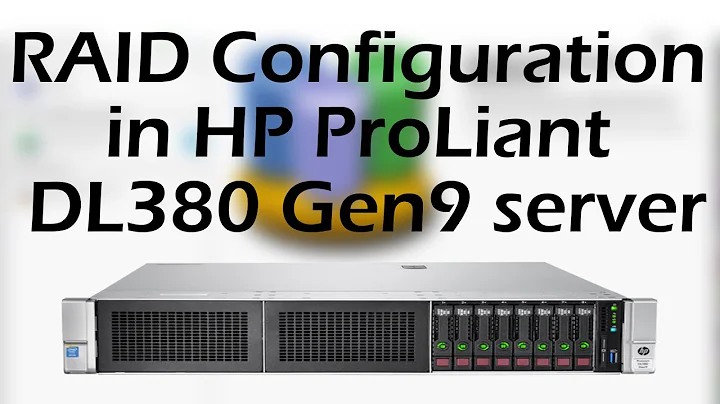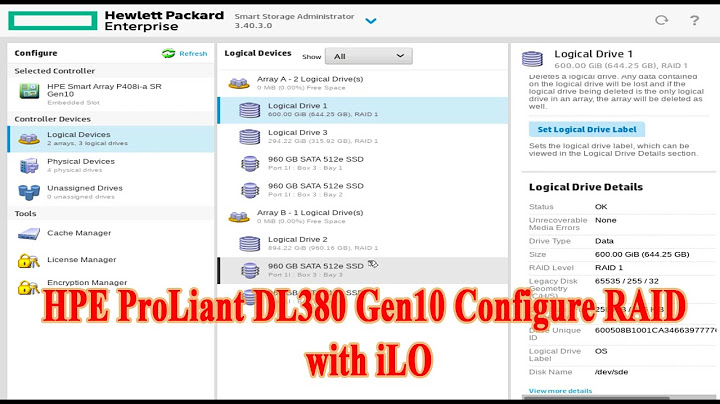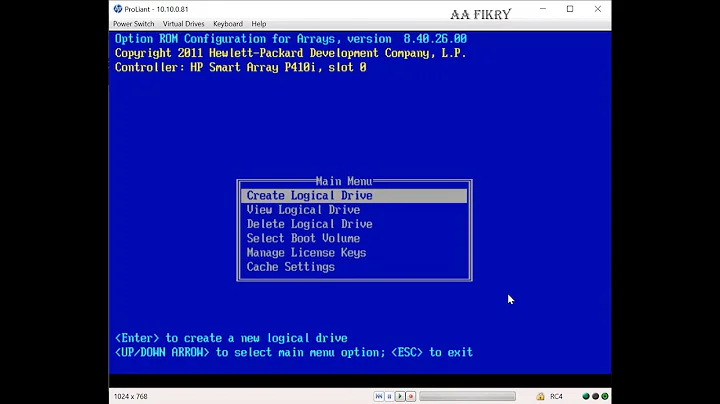Identify HP Array Logical Drive From Windows
Do you have the HP management utilities installed? Download the ProLiant Support Pack for Windows 2003 (or the 64-bit variant).
This will be helpful in providing general management and health monitoring of the system. At the very least, you can acquire the information you're seeking by installing the Array Configuration Utility CLI (command line interface) component of the ProLiant Support Pack.
Running a quick command like ctrl all show config detail will generate a good amount of controller, array and disk information; including mount points. You'll also see which drives are assigned to which RAID 1 pair and the overall health of each logical drive. Based on this information, you should be able to replace the failed drive seamlessly, but make sure you examine the output first.
HP Array Configuration Utility CLI 8.60-8.0
Type "help" for a list of supported commands.
Type "exit" to close the console.
=> ctrl all show config detail
Smart Array P400i in Slot 0 (Embedded)
Bus Interface: PCI
Slot: 0
Serial Number: PH7AMW5213
Cache Serial Number: PA82C0H9SVC7O6
RAID 6 (ADG) Status: Disabled
Controller Status: OK
Chassis Slot:
Hardware Revision: Rev D
Firmware Version: 7.18
Rebuild Priority: Medium
Expand Priority: Medium
Surface Scan Delay: 15 secs
Surface Scan Mode: Idle
Wait for Cache Room: Disabled
Surface Analysis Inconsistency Notification: Disabled
Post Prompt Timeout: 0 secs
Cache Board Present: True
Cache Status: OK
Accelerator Ratio: 25% Read / 75% Write
Drive Write Cache: Enabled
Total Cache Size: 256 MB
No-Battery Write Cache: Enabled
Battery/Capacitor Count: 0
SATA NCQ Supported: True
Array: A
Interface Type: SAS
Unused Space: 0 MB
Status: OK
Logical Drive: 1
Size: 136.7 GB
Fault Tolerance: RAID 1
Heads: 255
Sectors Per Track: 32
Cylinders: 35132
Strip Size: 128 KB
Status: OK
Array Accelerator: Enabled
Unique Identifier: 600508B1001032313320202020200001
Disk Name: \\.\PhysicalDrive0
Mount Points: C:\ 136.7 GB
Logical Drive Label: A240AB6BPH7AMW5213 E1C6
Mirror Group 0:
physicaldrive 1I:1:1 (port 1I:box 1:bay 1, SAS, 146 GB, OK)
Mirror Group 1:
physicaldrive 1I:1:2 (port 1I:box 1:bay 2, SAS, 146 GB, OK)
physicaldrive 1I:1:1
Port: 1I
Box: 1
Bay: 1
Status: OK
Drive Type: Data Drive
Interface Type: SAS
Size: 146 GB
Rotational Speed: 10000
Firmware Revision: HPD1
Serial Number: BS01P7900S6P0738
Model: HP DG146A3516
PHY Count: 1
PHY Transfer Rate: 3.0GBPS
physicaldrive 1I:1:2
Port: 1I
Box: 1
Bay: 2
Status: OK
Drive Type: Data Drive
Interface Type: SAS
Size: 146 GB
Rotational Speed: 10000
Firmware Revision: HPD1
Serial Number: BS01P7900PY80737
Model: HP DG146A3516
PHY Count: 1
PHY Transfer Rate: Unknown
Related videos on Youtube
Tony Blunt
Updated on September 18, 2022Comments
-
Tony Blunt over 1 year
Probably something simple, but I'm trying to identify which logical drive in my HP Server's Array relates to a particular disk presented in Windows Server 2003.
So I have a Proliant DL580 G5 server with two RAID controllers. The controller in question is a Smart Array P400, which has 8 disks, split into 4 Arrays (A,B,C,D) each with a RAID 1 logical drive. The server is reporting a disk failure on one of the logical drives, and I would like to backup the files before replacing the failed disk.
What I thought would be a simple task is proving a bit of a pain. How do I identify which windows 'disk' relates to each of the logical drives in the RAID Array? I can't find any properties in diskmgmt.msc that relate to properties in ACU. Whilst I have an idea which one it is, I can't be sure.
Thanks in advance...
-
Tony Blunt almost 13 yearsYou, sir, are a star :)
-
Tony Blunt almost 13 yearsThat is spot on, mapping the mount points to the logical drive was exactly what I was after, and couldn't see this in the GUI for the Array Config Utility. This is my first post, what's the process for marking as correct etc?




